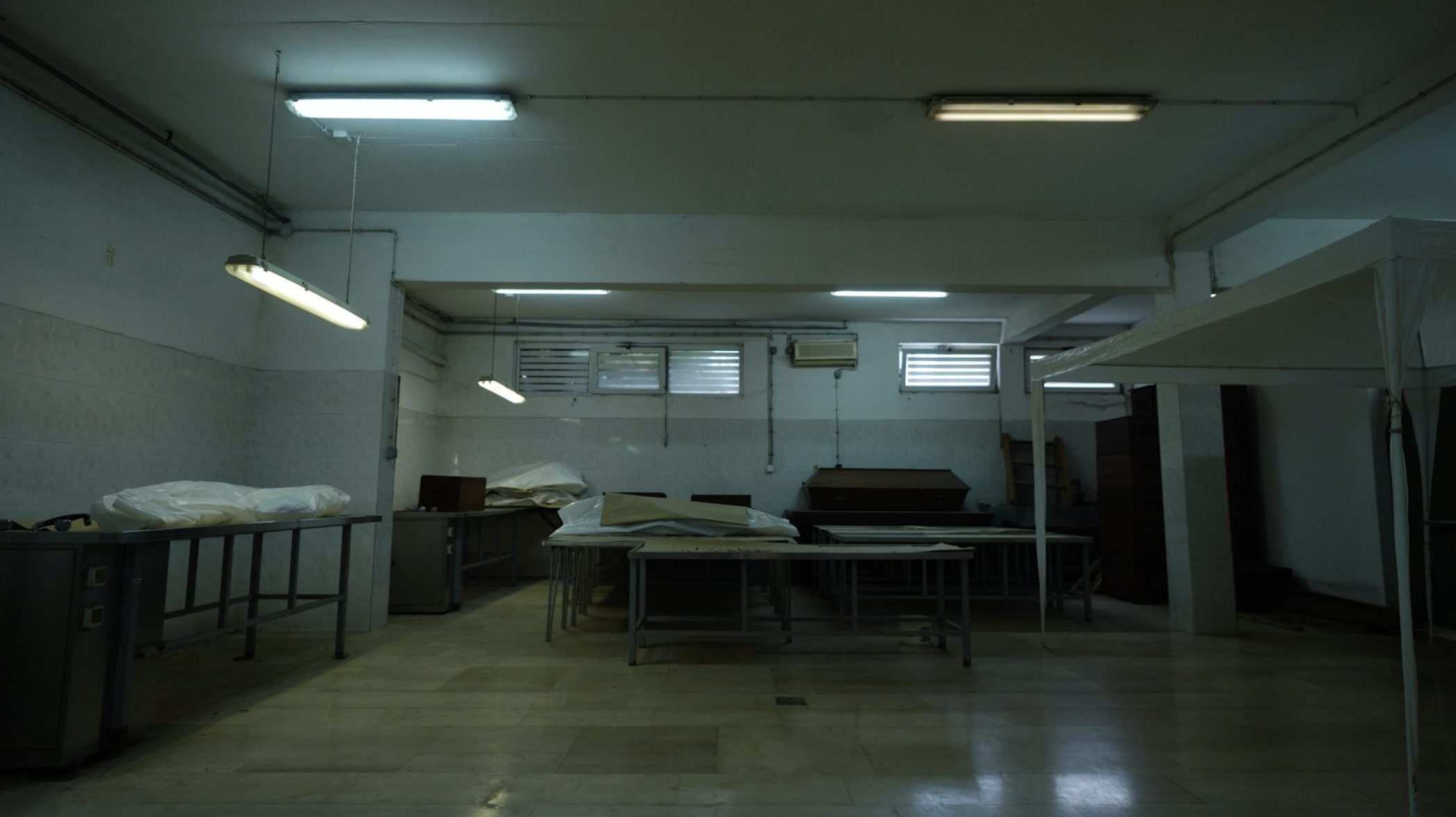This post is also available in: Bosnian
Hague verdicts hold High Command under Ratko Mladic most responsible for the carnage in Srebrenica, along with active participation of Bosian Serb army’s Drina Corps.
Hague Tribunal verdicts have established that the mass killings in Srebrenica in 1995 were planned by the highest command of the Army of Republika Srpska, VRS, and that those most responsible were members of the General Staff and Command of the Drina Corps.
“VRS Units were engaged in detention, transport and execution of Bosnian Muslims, including the members of the Drina Corps, the Bratunac and Zvornik Brigades and the 10th Sabotage Unit,” Radislav Krstic’s verdict stated in April 2004.
“The participation of so many units shows the extent to which the process was planned, and the participation of the Sabotage Unit specifically shows that the VRS General Staff was directly involved in this operation,” the same verdict added.
The verdict on Krstic, former Chief of Staff of the Drina Corps, who was sentenced to 35 years in prison, was also the first issued by the International Criminal Tribunal for the Former Yugoslavia, ICTY, to qualify the crime in Srebrenica in July 1995 as genocide.
Operation Krivaja:
The VRS started its attack on Srebrenica on July 6, 1995, by shelling the town and taking over the checkpoints from the United Nations protection force, UNPROFOR.
The Drina Corps was the VRS military formation tasked with carrying out Operation “Krivaja 95”, which culminated in the capture of Srebrenica.
On July 9, units of the Drina Corps penetrated into the heart of the Bosniak enclave, stopping a kilometre from the town itself.
In the late afternoon, buoyed by military success and the lack of resistance, Radovan Karadzic, President of Republika Srpska, who is currently on trial before The Hague Tribunal, issued an order telling the Drina Corps to take the town itself.
The ICTY concluded that the shelling of Srebrenica, which was carried out by the Drina Corps on July 10 and 11, 1995, was designed to intimidate the Bosniak (Muslim) population and expel it.
On July 10, as a result of the attack, thousands of women, children and elderly from Srebrenica began to flee to the Dutch UNPROFOR base at Potocari.
The men gathered in nearby villages in the evening and formed a column that headed in the direction of Tuzla, which was controlled by the Army of Bosnia and Herzegovina, ABiH.
Prepared scenario:
According to the ICTY, from 10,000 to 15,000 men were in the column, about one-third of whom were armed.
The VRS meanwhile completed its occupation of the UN “protected enclave”, including the town of Srebrenica, on July 11, 1995.
Ratko Mladic, former Chief of Stuff of the VRS, who is on trial for genocide and other crimes in Bosnia, along with other generals of the Drina Corps, then entered the town.
ICTY verdicts have concluded that at that moment up to 25,000 refugees were gathered in Potocari.
As the humanitarian crisis escalated, Mladic, together with officers of the Drina Corps, representatives of UNPROFOR and the Bosniak population held three meetings in the Hotel Fontana in Bratunac where the fate of Srebrenica’s citizens was discussed.
Momir Nikolic also represented the Drina Corps at the meetings. In 2003, he pleaded guilty for crimes against humanity and was sentenced to 20 years’ jail.
Testifying against Karadzic, Nikolic said that in one talk with Vujadin Popovic, the Chief of Security of the VRS Drina Corps, in the morning of July 12, he found out about a prepared scenario to separate the men from the women and children.
“When I came to Potocari, I realized what was going on and it was clear that evil was being prepared for these separated men,” he said.
“I asked Popovic what we were going to do with men, and in his manner, he said that all the balije should be killed,” Nikolic said.
In the early morning of July 12, Krstic requested that “all buses belonging to the VRS should be provided to the Drina Corps for use”, and should be driven to Bratunac.
According to verdicts of the ICTY, the Drina Corps played a significant role in ensuring provision of the buses used to transport women, children and elderly from Potocari on July 12 and 13, 1995.
Women and children were transported as agreed to territory controlled by the Bosnian government army, ABiH.
The men were transported to detention sites in Bratunac. According to the court verdicts, all this was done in front of officers of the VRS General Staff, which was subordinate to Mladic.
Speaking about the separation of women and children from the men, Momir Nikolic said that the men from Srebrenica were mistreated by members of the Drina Corps from the start.
“They seized their belongings, threw their bags on a pile, bracelets, rings, watches, and then they imprisoned them in houses. They also hit them with guns and legs and insulted them,” he said.
Units of the Drina Corps and the Interior Ministry of the Republika Srpska captured thousands of Bosniaks on July 12 and 13.
Courts verdicts state that the majority of men who were separated in Potocari, or who were later captured in the forests, trying to reach Tuzla, were held from one to three days in Bratunac and then taken to other places of detention and executed.
According to first-instance verdict for six senior officers of the VRS, those responsible for organizing and carrying out the killings were Ratko Mladic, Ljubisa Beara, Radivoje Miletic and Milan Gvero, former members of the General Staff.
They transferred the orders to units on the ground through Vinko Pandurevic and Drago Nikolic, members of the Command of the Zvornik Brigade.
“The Trial Chamber is ascertained that in July 1995, Beara resolved to destroy the group of Bosniaks by killing all of those who he was able to reach and that, beyond reasonable doubt, he had genocidal intent,” the first-instance verdict in the Beara et al case stated in June 2010.
Of five places of mass executions of Bosniaks from Srebrenica in July 1995, in the Zvornik villages of Kravica, Pilica, Rocevici, Petkovci and Orahovac, it was established that, acting on the orders of the VRS General Staff, units of the Drina Corps participated in four.
Mass executions:
The first mass executions took place on July 13, 1995, in Kravica. Although it has been established that the Drina Corps were not involved in these killings, it is clear that on the evening of that day “they had to have known that the executions were being carried out”.
In the morning of July 14, a large group of prisoners from Bratunac of about 1,000 Bosniaks was taken on a convoy of 30 buses to the school in Orahovac. After being kept there for several hours, the men were brought in small groups to scaffolds.
“They lined up the men and shot them in the back. They killed those who survived the first fire by an additional shot,” Krstic’s verdict stated.
“While the executions were carried out, survivors reported, the Drina Corps’ heavy mechanization was digging pits. Witness N, who survived the shootings, reported that General Mladic drove himself and watched some of the executions.”
According to ICTY verdicts, evidence also links the executions in Orahovac with the Drina Corps.
The Hague Tribunal has determined that the Zvornik Brigade, which was subordinate to the Drina Corps, participated in the execution of men in Orahovac on July 14, 1995.
The same afternoon, another group of about 2,000 prisoners from Bratunac were taken to the school in Petkovci. As in other places of detention, conditions at the school were wretched.
That night the men were taken in trucks to a dam in Petkovci. According to the court, the presence of the Zvornik Brigade was also evident in the zone of Petkovci on July 15 when the executions were carried out.
The participation of the Drina Corps and the 10th Sabotage Unit in the atrocities at Branjevo Military Economy is established by court verdicts.
The ICTY verdict from March 1998 to Drazen Erdemovic determined that members of the 10th Sabotage Unit on July 16, 1995, received an order from Vujadin Popovic to start executions.
“Members of the Bratunac Brigade arrived at the Branjevo Military Economy field in the afternoon of July 16 and participated in the killing,” the verdict stated on Erdemovic, who pleaded guilty and was sentenced to five years in prison.
“The Drina Corps military police was engaged in keeping Muslim prisoners in buses by which they were transported to Branjevo, and the Zvornik Brigade equipment was used for work related with the burials of the victims,” it added.
In Kozluk, near Zvornik, about 500 Srebrenica men, who were previously detained in the school in the village of Rocevici, were killed on July 15.
Participation of units of the Drina Corps in this crime was established in verdict for Milorad Trbic, former Assistant Chief of Security for the Zvornik Brigade, whom the Court of Bosnia and Herzegovina pronounced guilty of genocide in January 2011.
Trbic admitted to Hague Tribunal investigators that he twice went in Kozluk and killed five prisoners in the school.
The verdict for the killings in Kozluk also found that other members of the Zvornik Brigade were responsible for the crime.
Hague Tribunal verdicts are clear when talking about the role of the command staff of the Drina Corps and of the VRS Main Staff, and conclude that killings in the villages around Zvornik were organized and followed a pattern.
“The men were detained, transported to the location and summarily executed,” the Krstic verdict stated.
“By July 13, the Command of the Drina Corps had to have known that the execution of all prisoners was planned.
“Bosnian Serb forces were aware, when they embarked on a genocidal venture, that the evil that they inflicted on Bosniaks would bring them permanent distress,” the verdict added.
Buck stops with Mladic:
Most responsibility for the Srebrenica genocide falls on Mladic and other members of the VRS Main Staff, who are held responsible for the plan of killing.
“Such a plan came from the highest echelons of the General Staff, including the commander Mladic,” the verdict on the Chief of Staff of the Drina Corps stated.
“The operation of killing is planned and implemented by the security authorities of the VRS. The Drina Corps also participated, but it is clear from the evidence that such a massive operation could not be undertaken without approval of Mladic,” it added.
“His seal can be continuously followed through key moments of the killings. The Trial Chamber is ascertaining that Mladic was a central and driving force behind the plan of killing.”
Denis Džidić is BIRN – Justice Report journalist. denis @ birn.eu.com. Justice Report is BIRN online weekly publication.
- Case: Karadzic Radovan
- Case: Mladic Ratko
- Case: Trbic Milorad
- Person: Beara Ljubisa
- Person: Erdemovic Drazen
- Person: Gvero Milan
- Person: Karadzic Radovan
- Person: Krstic Radislav
- Person: Miletic Radivoje
- Person: Mladic Ratko
- Person: Nikolic Drago
- Person: Nikolic Momir
- Person: Pandurevic Vinko
- Person: Popovic Vujadin
- Person: Trbic Milorad
- War crimes




